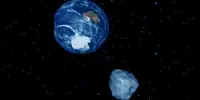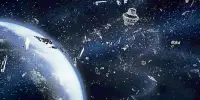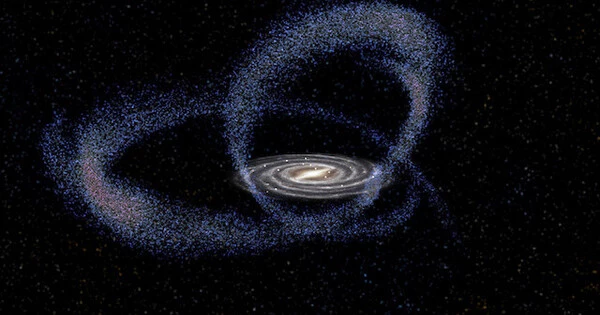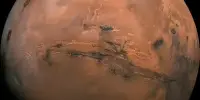Astronomical discoveries are produced all the time, and astronomers and researchers name new objects and events in the universe in accordance with established protocols. The enormous bubble is 820 million light years away from Earth and is thought to be a fossil-like remnant of the universe’s genesis.
The University of Hawaii-led finding of an enormous bubble 820 million light-years distant from Earth is thought to represent a fossil-like remnant of the universe’s birth. The bubble was discovered unexpectedly inside a network of galaxies by astronomer Brent Tully of the University of Hawaii Institute for Astronomy and his team. Hooleilana, a term derived from the Kumulipo, a Hawaiian creation chant recalling the origin of structure, has been given to the creature.
The new discoveries, which were published in The Astrophysical Journal, state that these gigantic structures are predicted by the Big Bang hypothesis as a result of 3D ripples discovered in the early universe’s material, known as Baryon Acoustic Oscillations (BAO).
It is a much stronger feature than expected as an increase in the density of galaxies. The extremely vast radius of one billion light years exceeds theoretical assumptions. If its genesis and evolution follow theory, this BAO is closer than predicted, implying a high number for the universe’s expansion rate.
Brent Tully
“We weren’t on the lookout for it. It is so massive that it spills over the edges of the sky region we were studying,” Tully added. “It is a much stronger feature than expected as an increase in the density of galaxies. The extremely vast radius of one billion light years exceeds theoretical assumptions. If its genesis and evolution follow theory, this BAO is closer than predicted, implying a high number for the universe’s expansion rate.”
Astronomers located the bubble using data from Cosmicflows-4, which is to date, the largest compilation of precise distances to galaxies. Tully co-published the exceptional catalog in fall 2022. His team of researchers believe this may be the first time astronomers identified an individual structure associated with a BAO. The discovery could help bolster scientists’ knowledge of the effects of galaxy evolution.
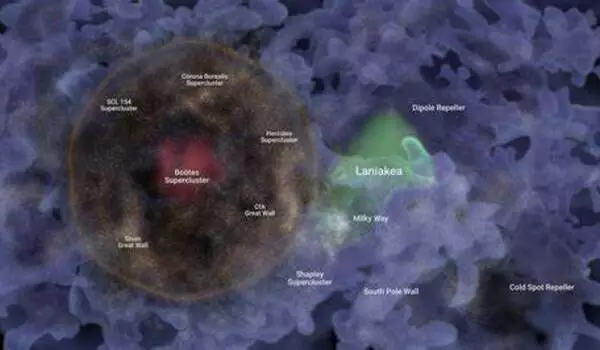
Enormous bubbles of matter
According to the well-established Big Bang theory, the cosmos is a cauldron of boiling plasma similar to the interior of the Sun for the first 400,000 years. Electrons were isolated from atomic nuclei within a plasma. During this time, regions with slightly higher densities began to collapse under gravity, despite the intense radiation bath’s efforts to drive matter apart. Because of the conflict between gravity and radiation, the plasma oscillated or rippled and spread outward.
The earliest waves in the universe were determined by the distance a sound wave could travel. This distance was determined by the speed of sound in plasma and was fixed after the cosmos cooled and stopped being plasma, leaving massive three-dimensional ripples. Throughout the eons, galaxies formed at the density peaks, in enormous bubble-like structures. Patterns in the distribution of galaxies, properly discerned, could reveal the properties of these ancient messengers.
“I am the group’s cartographer, and mapping Hooleilana in three dimensions helps us understand its content and relationship with its surroundings,” said CEA Paris-Saclay University researcher Daniel Pomarede. “It was an incredible process to create this map and see how the giant shell structure of Hooleilana is composed of elements that have previously been identified as being some of the largest structures in the universe.”
In 2014, the same team of researchers discovered the Lanikea Supercluster. In comparison, that structure, which includes the Milky Way, is modest. Lanikea stretches to the near edge of this much larger bubble, with a diameter of around 500 million light years.
Uncovering a single BAO
Tully’s team revealed that Hooleilana had been identified as the most prominent of numerous shell-like objects seen in the Sloan Digital Sky Survey in a 2016 study report. However, the previous work did not reveal the entire range of the structure, and the researchers did not infer that they had discovered a BAO.
The researchers were able to see a full spherical shell of galaxies, pinpoint its core, and show that there is a statistical enhancement in the density of galaxies in all directions from that center using the Cosmicflows-4 database. Hooleilana contains many well-known astronomical formations, such as the Harvard/Smithsonian Great Wall, which contains the Coma Cluster, the Hercules Cluster, and the Sloan Great Wall. At its heart is the Boötes Supercluster. The Boötes Supercluster resides at its center. The historic Boötes Void, a massive empty spherical region, lies inside Hoʻoleilana.

